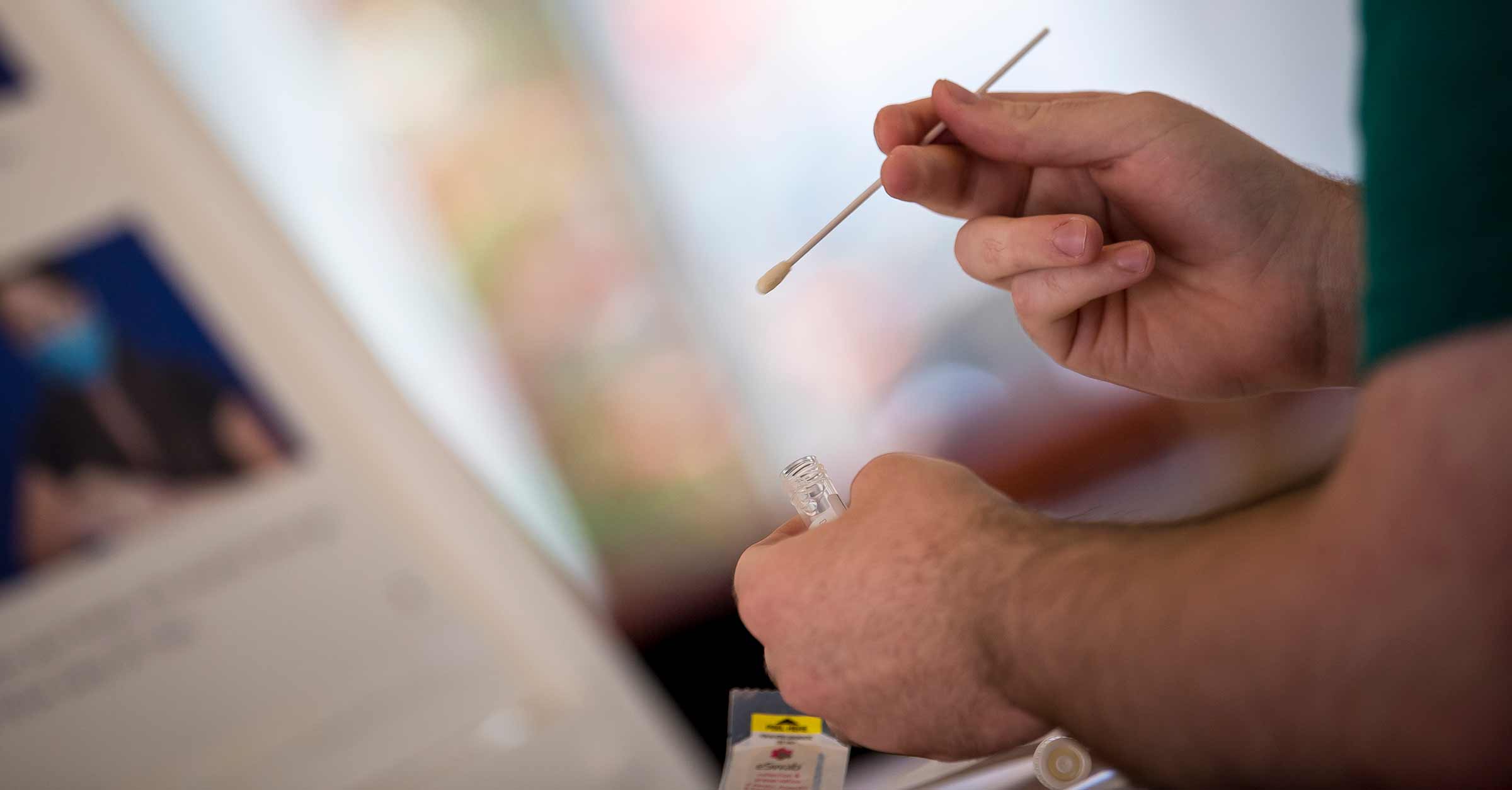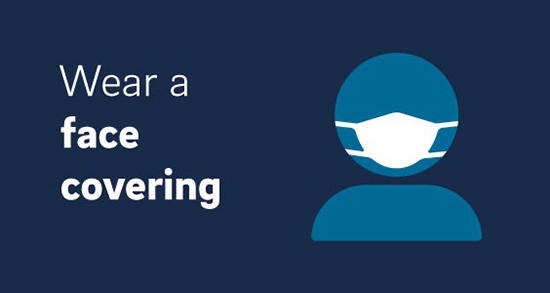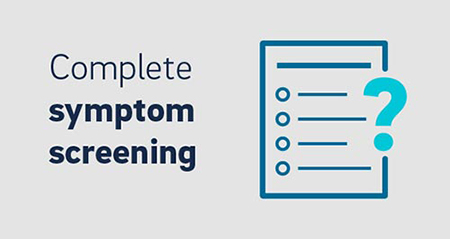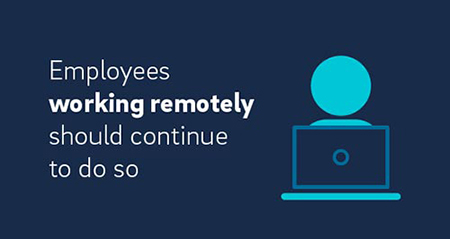By:
- Erika Johnson
Published Date
By:
- Erika Johnson
Share This:
Fall Quarter Brings a Fraction of Students and Employees to Campus
University’s Return to Learn program to guide low-density repopulation with a focus on viral protection, detection and intervention

Photo by Erik Jepsen/University Communications
When fall quarter begins Sept. 28 at the University of California San Diego, there will be fewer students on campus to allow for effective public health protocols. Approximately 7,500 undergraduate students will be living in single occupancy rooms for the fall quarter, with double- and triple-occupancy housing options eliminated to reduce housing density. About 4,000 graduate students will also be living on campus, with single graduate students housed in single bedrooms. In addition, an estimated 4,800 undergraduate students living in the community are expected to come to campus to take classes in-person.
The university developed a comprehensive “Return to Learn” fall plan to incrementally return to in-person activities on campus. The plan includes face covering requirements, increased sanitation, consistent and risk-based asymptomatic testing, symptomatic testing as well as wastewater testing and public health interventions that include case isolation, contact tracing and exposure notification.
“I want to assure our entire UC San Diego community that we have taken tremendous care both in planning and in practicing for your return to campus,” said Chancellor Pradeep K. Khosla. “Our strategies to mitigate risk, detect the virus and intervene when positive cases occurred during the spring and summer were successful.”
Campus safety
To protect all students, faculty and staff, UC San Diego has developed enhanced safety requirements for individuals arriving, working and living on campus. Everyone on the UC San Diego campus must possess and wear face coverings. Generally speaking, the campus community is expected to maintain six feet or more of physical distance whenever feasible.

To provide plenty of space for effective physical distancing, the university’s density will remain low. Current plans are to offer 12% of fall 2020 courses using an in-person or hybrid modality. The remaining courses will be conducted remotely. Each class will be limited to 25% capacity with a maximum of 50 students. Nearly all employees who are currently working remotely will continue to do so at least through Dec. 31, 2020. This means only 25% of faculty and staff who would typically be on campus during normal operations will be working on-site. In addition, undergraduate housing will also experience an approximately 50% reduction from typical density.
The flow of campus traffic has also been reconfigured. Academic buildings, residence halls, and retail and dining facilities have been adjusted to provide one-way traffic into and out of spaces. In addition, building ventilation has been augmented to circulate fresh air from outside, hand sanitizer dispensers have been placed at the entrances of all dining and market locations, and buildings will be cleaned and disinfected frequently throughout the day. Protective barriers are also being installed within all campus shuttles, as well as regular cleaning of shuttle surfaces, parking pay stations and elevator controls.
Screening and testing
All UC San Diego employees and students who are reporting to campus or any other physical UC San Diego location are required to complete and submit a daily self-screening for COVID-19. There will be mandatory testing for all students arriving on campus, as well as no-cost asymptomatic testing at UC San Diego Health for all faculty and staff who will work on campus. Beginning in October, repeated risk-based testing will continue throughout the quarter based on epidemiologic modeling and the evolution of the pandemic.

“The goal of our asymptomatic testing program is to enable us to detect outbreaks at their earliest stage so that we can intervene and prevent them from growing,” said Natasha Martin, Ph.D., associate professor of medicine at UC San Diego School of Medicine and one of the Return to Learn project leads. “Our simulation models have helped us understand that we have a high likelihood of detecting an outbreak before there are 10 detectable infections if we test at least 75% of the population on campus every month.”
Another step in helping to repopulate the campus includes monitoring sewage output at various strategic locations on campus. Research has shown that the SARS-CoV-2 virus can be detected in sewage three to five days before it shows up in regular testing. By monitoring sewage and testing housing blocks, campus experts can take action to get ahead of an outbreak.
UC San Diego has upgraded the majority of campus HVAC systems in labs, research buildings, classrooms and lecture halls to MERV 14 or higher filters and adjusted ventilation settings in all occupied buildings to maximize air changes and fresh air within all spaces. This includes increased fan speeds and disinfection of cooling coils, condensate drains and other items to ensure fresh air intakes are as clean as possible.
Information about COVID-19 testing and prevalence in the UC San Diego community is updated weekly on the SARS-CoV-2 Testing Dashboard. These numbers are based on tests conducted by UC San Diego Health and UC San Diego Student Health Services.
Return to campus
Undergraduate move-in will be staggered over a 10-day period from Sept. 19-28. During move-in, students will be required to take a COVID-19 test at no cost to them upon arrival to campus as part of the move-in process. Students will not have access to residential units until they have been tested. The goal of testing is to identify and isolate any asymptomatic individuals who could unintentionally spread the virus. All students who reside on campus will be expected to participate in daily symptom and exposure screening. All undergraduate residential common areas will be cleaned using a cleaning system that pairs an electrostatic sprayer with disinfectants and sanitizers.

In the event a student living in on-campus housing tests positive for COVID-19 at any time during the academic year, they will be moved to designated on-campus isolation housing, where Student Health and Well-being Services will provide care and ensure basic needs such as food delivery are met. Graduate students may choose to isolate themselves in their apartments with their families.
With the return of students for the fall term, some—but not all—student-facing staff may be asked to return to on-campus work. UC San Diego is taking an incremental approach to increasing the number of employees working on-site to provide space for proper physical distancing.
Academic instruction
Over 4,750 undergraduate and graduate lecture, lab and discussion course sections will be offered this fall. Class size is limited to fewer than 50 students per class, or 25% of classroom capacity, whichever is smaller; many in-person classes will have fewer than 25 students. All faculty and students are required to wear an approved face covering while in any UC San Diego building, and will therefore be wearing face coverings for the duration of each in-person class session. Classroom seating distances will be identified, providing appropriate physical spacing for the given room but not less than six feet around each seat. Over 20 outdoor spaces across campus have been identified as potentially suitable for outdoor instruction or student support services.
Flexible response

UC San Diego will continue to make decisions based public health guidelines, including the recent guidance for higher education institutions from the State of California. In all decisions, the health and safety of students, faculty, staff and local communities will be paramount.
“UC San Diego is unique in the amount of space available on our campus; our expertise in prevention, viral monitoring and healthcare; and in our particularly bright and socially responsible scholarly community,” said Chancellor Khosla. “While we need to remain vigilant and flexible, we are committed to detecting potential outbreaks early and mitigating them as they occur.”
Share This:
You May Also Like
Stay in the Know
Keep up with all the latest from UC San Diego. Subscribe to the newsletter today.



